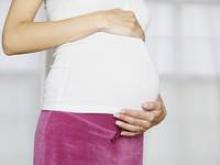The lowest pregnancy rate in more than a decade was reported for 2009, largely driven by declines among teenagers and, to a lesser extent, women under age 30 years.
The 2009 rate of 102.1 pregnancies per 1,000 women was 12% lower than the 1990 peak of 115.8 pregnancies per 1,000 women, reported Sally C. Curtin of the Centers for Disease Control and Prevention’s National Center for Health Statistics and her colleagues in the December issue of an NCHS Data Brief.
Continuing a trend of declining pregnancies, especially since 2007, the rate drop occurred across both married and unmarried women, although the rate among women over age 30 continued to climb gradually from 1990 rates. "It has been suggested that the declining economy, beginning in 2007, has likely played a role in the decreased rates for women under age 40," the authors wrote (NCHS Data Brief, December 2013; No. 136:1-7).
The age group with the highest pregnancy rate also shifted slightly: Those aged 25-29 led with 1.69 million pregnancies in 2009, compared with 1.61 million pregnancies among women aged 20-24. In 1990 and 2000, women aged 20-24 had the highest pregnancy rates.
The most substantial declines in pregnancy rates occurred among teenagers. The rate among all teens in 2009 was 37.9/1,000, down 39% from the 1991 peak of 61.8 pregnancies per 1,000 teens. The fall in the teen pregnancy rate has continued through 2012, with an all-time low of 29.4/1,000 teens. Younger teens in particular have contributed to the decline, with the rate among girls aged 15-17 down 53% since 1990. The drop among 18- and 19-year-olds fell by more than a third (36%) since 1990.
Although black and Hispanic teen pregnancy rates remained at least double the rates among white teens, the decline was still seen across all three demographics. White and black teen pregnancy rates fell 50%, and the Hispanic rate fell 40%, between 1990 and 2009. The authors noted that the teen pregnancy rate declines match up with related trends among teens showing shrinking percentages of sexually experienced teens and increasing rates of contraception use at first intercourse.
Along with the drop in pregnancies has been a drop in abortions, a trend that has continued since 1980 to arrive in 2009 at the lowest rate since 1976. The 2009 rate of 18.5 abortions per 1,000 women is 32% lower than the 1990 rate of 27.4/1,000 women.
However, the abortion rates varied greatly between married and unmarried women: The 2009 rate for unmarried women was 28.9/1,000, almost five times greater than the 6.1/1,000 rate among married women. Accordingly, married women’s 2009 birth rate of 85.6 live births per 1,000 women was 72% higher than that of unmarried women, 49.9/1,000 women.
The data are pulled from three federal sources on live births, abortions, and fetal losses. All states report live births to the CDC’s National Center for Health Statistics through the vital statistics cooperative program of the National Vital Statistics System. Most states report abortion data to the CDC’s National Center for Chronic Disease Prevention and Health Promotion, after which the data are adjusted by the Guttmacher Institute to estimate national totals.
The NCHS National Survey of Family Growth provided data for estimates of fetal losses from the 1995, 2002, and 2006-2010 surveys, plus 1988 data used only for adolescent estimates. The report was funded by the Centers for Disease Control and Prevention.


